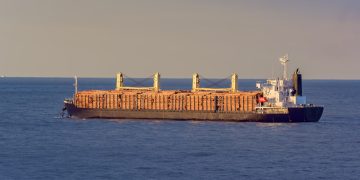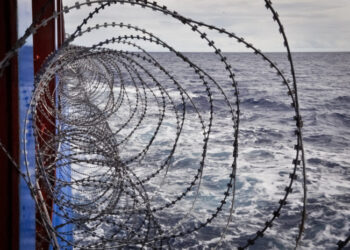At 11:51 a.m. (Sanaa time) on April 24, a vessel successfully intercepted an anti-ship ballistic missile (ASBM) launched from Houthi-controlled areas in Yemen over the Gulf of Aden, USCENTCOM reports.
The ASBM was likely targeting the MV Yorktown, a U.S.-flagged, owned, and operated vessel with 18 U.S. and four Greek crew members. Fortunately, there were no injuries or damage reported by U.S., coalition, or commercial ships. Subsequently, between 12:07 p.m. and 1:26 p.m., U.S. Central Command (USCENTCOM) successfully engaged and destroyed four airborne unmanned aerial vehicles (UAV) over Houthi-controlled areas of Yemen.
To remind, The United Kingdom Maritime Trade Operations (UKMTO) received a report of a maritime incident occurring 72 nautical miles east-southeast of Djibouti, also occurring on April 24.
Best practices
During the SAFETY4SEA Hamburg Forum 2024, Nikos Georgopoulos, Chief Business Development Officer, Diaplous presented the following best practices for transiting vessels to reduce the risk while in the Indian Ocean and Red Sea, it is vital that:
- Vessels should transit through the recommended Maritime Security Transit Corridor (MSTC), which consists of the Internationally Recommended Transit Corridor (IRTC), the BABTSS, and the TSS West of the Hanish Islands (two-way route).
- All crew members maintain the highest levels of vigilance with a 24-hour visual and radar watch, particularly when sailing through the Yemen EEZ, at anchor, operating in restricted maneuvering environments, or proceeding at slow speeds.
- All vessels scheduled to cross the area should sail outside Yemeni waters and during nighttime, if possible, and increase their distance from Iranian, particularly Islamic Revolutionary Guards Corps (IRGC) assets, and Houthi controlled areas.
- Crews are strongly advised to review and study Article 110, “Right of Visit,” of the United Nations Convention on the Law of the Sea (UNCLOS), which outlines the justifications for a warship’s visit or boarding of a foreign vessel.
- Bridge teams must be aware of how to react in case of any type of maritime harassment.
- Report any suspicious activity in the area to the authorities.
- Incorporate appropriate protective measures into the vessel security plan.
- Monitor relevant VHF and other communication channels.
- Automatic Identification Systems (AIS) and Long-Range Identification and Tracking (LRIT) systems are switched on and functional.
- Apply BMP5 mitigation measures, and specifically Sector 7, in the case of military intervention.
- Minimize crew deck movements while transiting through the area, particularly to and from the Gulf of Aqaba, the Southern Red Sea, and GoA.
- Fortify the vessel’s CITADEL and conduct a detailed SACE (Ship’s Antipiracy Capabilities Effectiveness) drill.
- Harden the HELIPAD or WINCH area of the vessel and make it difficult for the helicopter to approach.
- Early detection and announcement of a helicopter or fast boat approach.
- Implement detailed SOPs, specifically related to military intervention and Houthi military attacks, focusing on early warning and deterrence.
- Deploying security teams onboard the vessel ensures smooth transit and operation. Deploy teams have the necessary training and experience to make informed decisions, keep vessels clear of small boats, dhows, and fishing vessels, and, if necessary, take evasive actions and request assistance as needed, always bearing in mind not to escalate Rules of Use of Force (RUF) in the case of military intervention.

































































